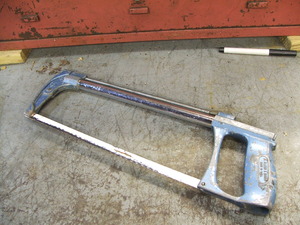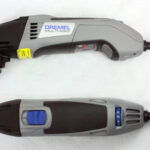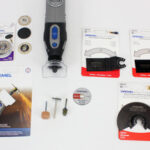Are you thinking about buying a hacksaw? In my opinion, a hacksaw is a useful tool to have around the house, especially when it comes to cutting small pipes by hand. You may opt to buy a hacksaw with an adjustable frame ($10), a fixed frame ($17) or a convertible frame. Personally, I’d recommend that you go with either the adjustable or convertible frame ($15) because they tend to be more versatile. You’ll also want to buy a variety of blades to go along with it. Once you have your hacksaw in hand, you’ll need to learn how to use it. Here are a few helpful tips to get you started in that regard:
Use the Right Blade
Using the proper blade is essential when it comes to getting the most out of your hacksaw. In general, the more teeth a hacksaw blade has, the better suited it is for precision cuts as well as cutting thin and softer materials. I’d suggest saving the blades with least amount of teeth for thicker and harder materials.
Use the Proper Tension
Once you have the right blade, one of the next best things that you can do is properly adjust the hacksaw’s tension. That’s because a tight saw blade tends to require less pressure and energy on the part of the user. In my experience, the less energy and pressure needed to make the cut, the less chance there is that the muscles in my arms will end up hurting. In order to increase the tension, you’ll need to turn the wing nut on the hacksaw until the saw blade is as rigid and tight as possible. In addition to adjusting the tension of the blade, you’ll also want to hold the saw with both hands when you use it. Doing so helps to apply even pressure to the blade and thereby reduces uneven wearing of the blade’s teeth and raggedy edges along your cut line.
Lubricate the Blade
Hacksaw blades are known to break when they overheat or have too much uneven, downward pressure on them. One way to reduce the friction is to thinly coat the hacksaw blade with a bit of machine oil. A bottle of machine oil from most major retailers will tend to cost you $10 as opposed to spending $7 or more on a blade every time one snaps due to friction.
Reserve the Blade
Do you need to saw in a hard to reach area? If you, so may want to try reversing the blade so the teeth face up and forward instead of down and forward. When the blade is in that position, you’ll need to use a pull stroke instead of a push stroke. For me, reversing the blade and using a pull stroke has allowed me to cut in narrow areas that I wouldn’t have been able to reach otherwise.
Secure the Blade
Does your project require cuts be made to a thin piece of metal? Based on my experience, the best way to handle that situation is to break out two blocks of scrap wood and a table vise. Sandwich the metal piece in between two wooden blocks. Then place the entire ensemble into a table top vise and secure it into place. Use the hacksaw to cut through both the wooden blocks and the piece of metal all in one shot. The combination of the wood and vise should keep the metal from bending while you saw away at it.
Killeen Gonzalez has a history of completing home improvement projects with her family.
More from this contributor:
How to Ward Off Termites: Personal Experience
5 Routine Gutter Maintenance Tasks for Homeowners
5 Ways to Remove Stubborn Screws: Personal Experience
How to Fix Attic Condensation Problems: Personal Experience




